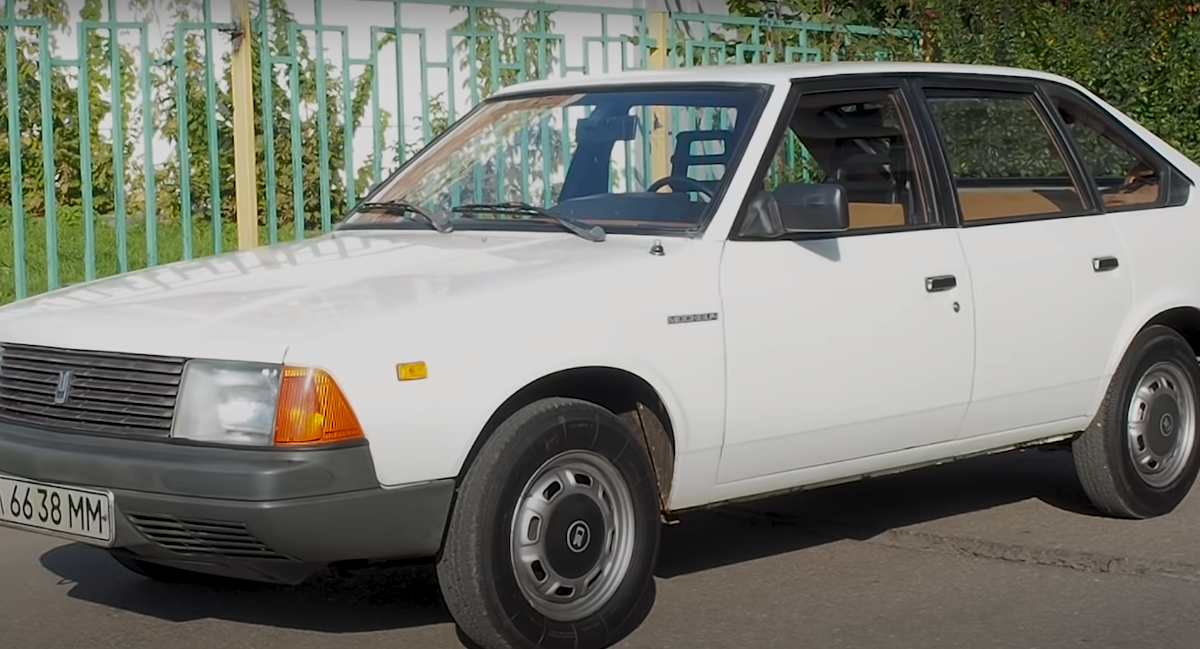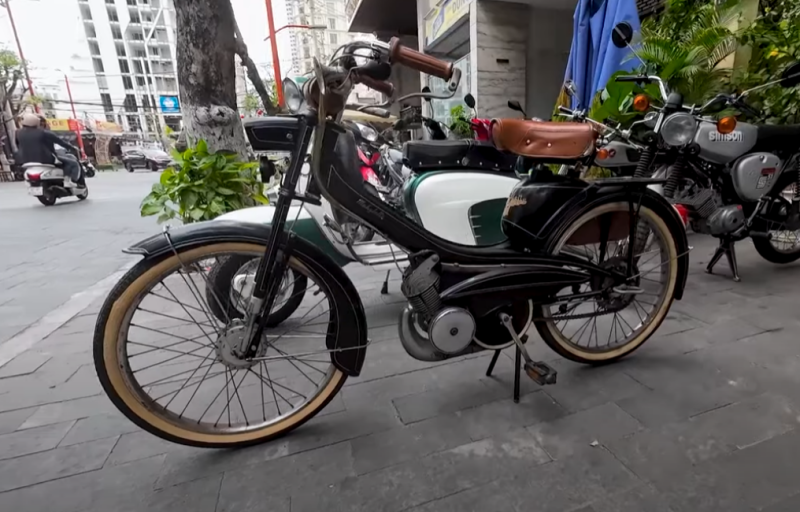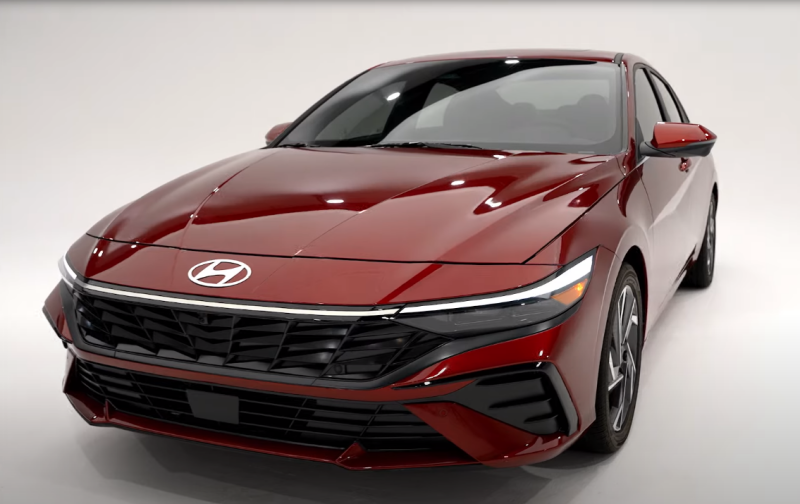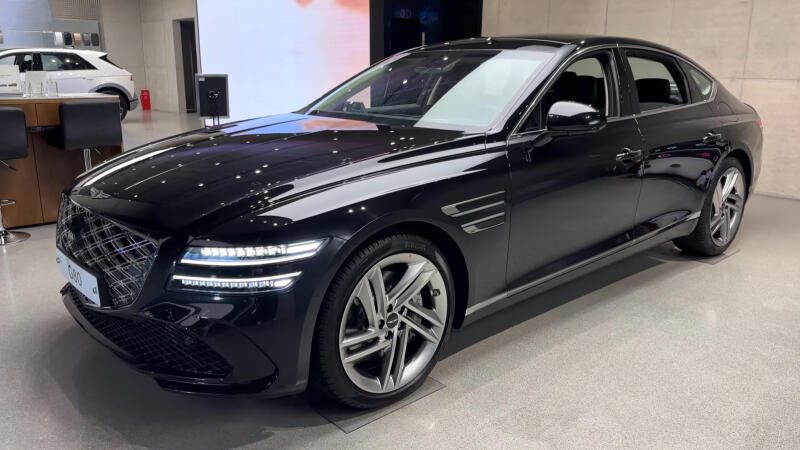But this stereotype, although it has a basis, is still erroneous. There is something to be proud of. In the Soviet Union they knew how to create good cars. Yes, it was not very successful to produce them later, but there are no complaints about the engineering school.
"Moskvich-2141". The last hope of the AZLK plant. Unfulfilled hope. "41st", like many other models of the Moscow Automobile Plant, could become the flagship of the Soviet automobile industry, but became a shame and a mockery. How did it happen?
I propose to recall the history of the last Moskvich, marvel at the prospects that opened up before him and grieve over the inglorious collapse of these hopes.
60-e
Yes, the history of the "41st" began back in the late 60s, when AZLK engineers began work on a new model, which was supposed to wedge between the upcoming mass-produced Zhiguli and the representative Volga. That is, in class D according to the modern classification.
Initially, it was assumed that the car would be rear-wheel drive. Projects of the 3-5 series were a slightly enlarged Moskvich-408. However, already at the beginning of the 70s, it became clear that the new machine would become morally obsolete even before it reached the assembly line. By 1975, work on the 3-5 series was stopped, and design energy was directed to the C-1 series. In the same 1975, the first layout of the new family was presented - a two-volume rear-wheel drive fastback.
 Still, it's good that such a design did not live up to the assembly line. Photo: youtube.com
Still, it's good that such a design did not live up to the assembly line. Photo: youtube.comThe controversial design of the prototype caused a lot of controversy, as a result of which significant changes were made. This is how prototypes appeared, first S-2, and then S-3, in the guise of which the features of the future Moskvich-2141 are already showing through.
 Running layout C-3. The plasticine model had more in common with 2141. Photo: youtube.com
Running layout C-3. The plasticine model had more in common with 2141. Photo: youtube.comIn the mid-70s, significant changes took place in the leadership of AZLK. The new bosses were skeptical about the idea of building a new rear wheel drive car. In 1977, a strong-willed decision was made that the upcoming Moskvich would be front-wheel drive. I must say that while working on the C-3, the engineers also experimented with front-wheel drive, so a radical change in the concept did not mean that all previous developments were sent to the scrap at once. The designers were ready to develop the C-3 series on a front-wheel drive basis.
However, the management of the plant ordered otherwise. It was decided to take the already existing Western model as a basis and, starting from this “stove”, already build your own car. The Simca 1307 (also produced under the Chrysler brand) was chosen as a sample, which bore the title of "Car of the Year 1976" of the European competition.
 When viewed from the rear, the similarities between the two models are obvious. Photo: youtube.com
When viewed from the rear, the similarities between the two models are obvious. Photo: youtube.comAZLK engineers were less than enthusiastic about the paradigm shift.
One of the designers later recalled that the designers were literally offended by the fact that they were forced to copy someone else's model, despite the fact that they had their own developments.
Hence the assertion that AZLK-2141 is a "licked" Simca. However, this is not quite true. Or rather, not at all, because there was almost nothing left of Simka in Moskvich. Roof panel, yes doorways. The front end is completely new, as is the floor and rear end. Not to mention the aggregate base, because there are no coincidences at all!
 When viewed from the front, it's hard to talk about plagiarism, right? Photo: youtube.com
When viewed from the front, it's hard to talk about plagiarism, right? Photo: youtube.comIn addition, let's not forget that Moskvich, aka Aleko-2141, was quite actively supplied to Europe. And in no Western country, AZLK had any claims of plagiarism. Although the journalistic community has a lot of scoffing about this.
By the way, few people know where the export name Aleko came from and what it means. In fact, this is the same name for AZLK, only in the "western" manner - the Automobile Plant of Lenin Komsomol.
Just four months after the start of design, in October 1977, the first running model based on Simka was ready - at the plant he received the nickname "Maximka".
Video 2141
Work on the 2141 series continued. The final appearance of the Moskvich was formed by 1981, after which no major changes were made to the appearance. However, a copy approved for mass production was presented to management only in 1985.
 This "Moskvich" was released in 1987. Photo: youtube.com
This "Moskvich" was released in 1987. Photo: youtube.comThe following year, 1986, mass production began. In the first year, only 313 hatchbacks were produced, which were distributed mainly among the plant's employees.
Design "Moskvich-2141"
As I said above, the Simka accepted as a donor was deeply and creatively rethought. The front part has changed completely - the "412th" engine simply did not fit into the engine compartment of a French car.
Yes, the one and a half liter UZAM-331.10 engine was originally taken from the Moskvich-412, however, later, under the hood of the 41st, as an alternative, a unit from the VAZ-2106 was introduced. It was a temporary solution, since the prospect of getting a whole range of engines loomed before Moskvich:
- ✪ 8-liter 1,8-valve petrol, 105 hp
- ✪ 16-valve petrol 1,8 with 125 hp
- ✪ Turbodiesel 1,8 with 95 hp
These engines were developed and the construction of a plant even began under their production. However, the country, which collapsed at the wrong time, prevented the construction from being completed. So, we are once again convinced that there is nothing more permanent than something temporary.
 Engine compartment of "Moskvich" with UZAM engine. Photo: youtube.com
Engine compartment of "Moskvich" with UZAM engine. Photo: youtube.comHowever, in different years, other engines were installed in Moskvich - various variations of the Ufa UZAM and Togliatti VAZ, but the most successful modification was the 41st with a two-liter Renault engine.
But "his" engine "Moskvich-2141" did not wait. And this was one of the reasons for his tragedy.
The engine was aggregated with a 5-speed manual gearbox - for the first time among Soviet cars. True, the box did not impress with either reliability or clarity of switching.
The suspension scheme was copied from the Audi 100 - not the worst object to follow. However, the settings were original. As a result, Moskvich turned out to be quite smooth on the go, very energy-intensive, but very rolly. However, the credo of this car lies in the field of family values and driver settings were useless to him. Especially in the Soviet Union.
Interior and trunk
The main advantage of the Moskvich compared to the Zhiguli was, of course, a spacious hatchback body. In terms of internal volume, it was not much inferior to the much larger Volga, and the wide fifth door and folding rear sofa made it possible to load very large items.
 Perhaps the only inconvenience of the Moskvich trunk is the attachment of the spare wheel under the bottom. Photo: youtube.com
Perhaps the only inconvenience of the Moskvich trunk is the attachment of the spare wheel under the bottom. Photo: youtube.comThe interior of the cars of the first years of production (until 1990) had brown plastic trim, and the seats were trimmed with fabric of the same shade. For a Soviet car, it was chic.
 On this instance, there are regular (!) Power windows. Photo: youtube.com
On this instance, there are regular (!) Power windows. Photo: youtube.comEven the Volga had a simpler interior. Unfortunately, the quality of the materials, as well as the build quality, left a lot to be desired. As a result, the panels creaked and rattled mercilessly, making their mean contribution to the already not outstanding acoustic comfort. Which is more correct to call discomfort.
Further history
As you can see, the design of the "41st" even in the early 90s remained quite modern. And he could become the ancestor of a whole family of cars. As, in fact, it was planned. In addition to the hatchback, the plans of the developers included a sedan, a pickup truck and a minivan.
But Moskvich was sorely lacking its new modern engine. If “the largest geopolitical catastrophe of the 1991th century” had not happened in 41, the production of motors would have been mastered, the fate of the “XNUMXst” could have gone according to a different scenario. Unfortunately, history does not know the subjunctive mood.
 Body 2141 had excellent aerodynamics. There was no rear wiper, as the glass was always kept clean. The Cx coefficient was the best among Soviet cars. Photo: youtube.com
Body 2141 had excellent aerodynamics. There was no rear wiper, as the glass was always kept clean. The Cx coefficient was the best among Soviet cars. Photo: youtube.comBy the mid-90s, the production of "Moskvich" was already like an agony. In 1996, the conveyor stopped for the first time. The next year seemed to have a second wind, after the start of production of cars with the French Renault engine.
By this time, modernization had successfully ripened, turning Moskvich-2141 into Svyatogor. New optics appeared, the design of the front end changed, giving the car freshness.
However, the default of 98 put an end to these plans as well - against the backdrop of the collapsed ruble, it was not economically feasible to purchase imported engines.
 Sedan "Ivan Kalita" was purchased by the Moscow mayor's office. I wonder if anyone else wanted to buy? Photo: youtube.com
Sedan "Ivan Kalita" was purchased by the Moscow mayor's office. I wonder if anyone else wanted to buy? Photo: youtube.comAdded fuel to the fire and "far-sighted" policy of the then leadership. Instead of focusing on improving the rapidly declining quality of production, they got involved in experiments (almost wrote "excrement", which would probably be more correct) with the release of the "princely family" - modifications "Yuri Dolgoruky", "Ivan Kalita", "Prince Vladimir", in addition to which they came up with a "nightmare for two" - a double coupe "Duet".
 Coupe "Duet" was designed for two. Probably, there were no more willing to sit in this freak. Photo: youtube.com
Coupe "Duet" was designed for two. Probably, there were no more willing to sit in this freak. Photo: youtube.comAs a result, demand collapsed like an avalanche and in 2001 the plant produced only 810 cars. Then he finally stood up.
Finale
No, this is not an epilogue. This is an epitaph. A big factory, an excellent engineering school, promising undertakings, great love, bold hopes.
 Some owners stuck the letter "K" at the beginning of the model name. Photo: youtube.com
Some owners stuck the letter "K" at the beginning of the model name. Photo: youtube.comThe potential inherent in the model 2141 was no less, and maybe more, than that of the Togliatti G2108. However, the VAZ-09/41 survived all the storms of perestroika and post-Soviet chaos, developed, modernized and became the ancestor of a whole galaxy of models produced so far. And the "XNUMXst" fell victim to economic troubles and the incompetence of people who made decisions.
By the way, model 1307 was the last in the Simca production program. Like 2141 - in the history of AZLK. Maybe they made the wrong choice in the first place?










